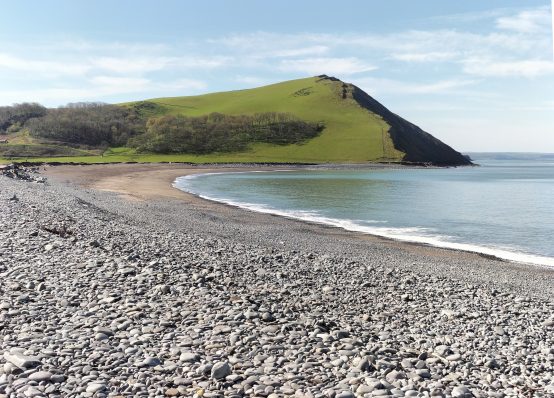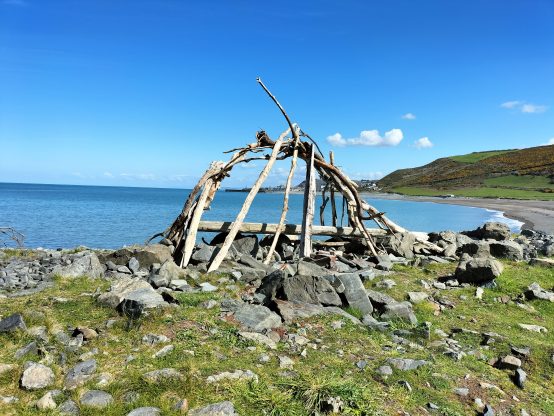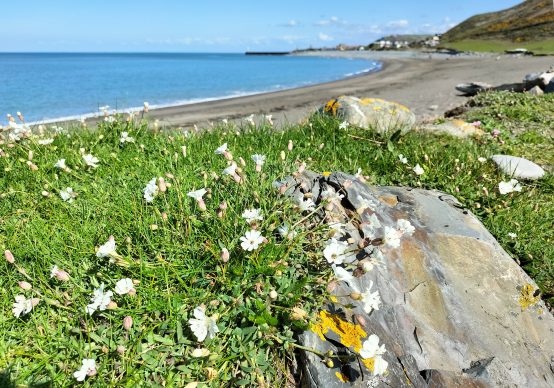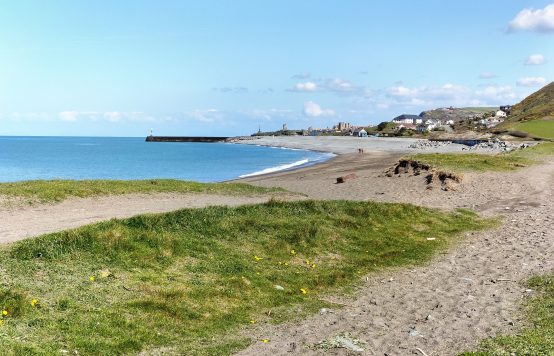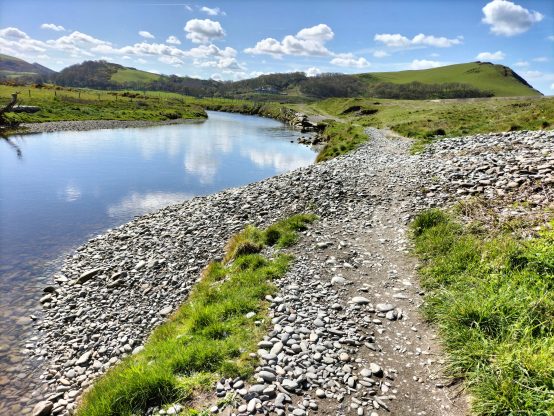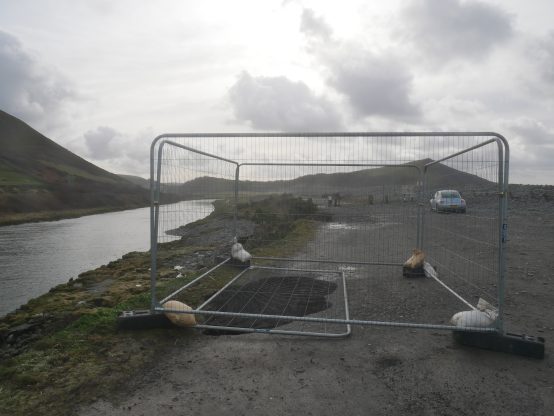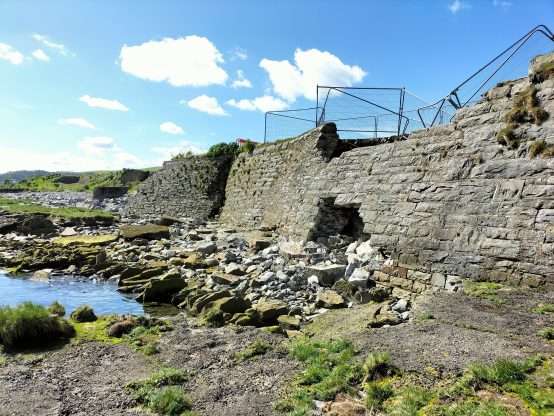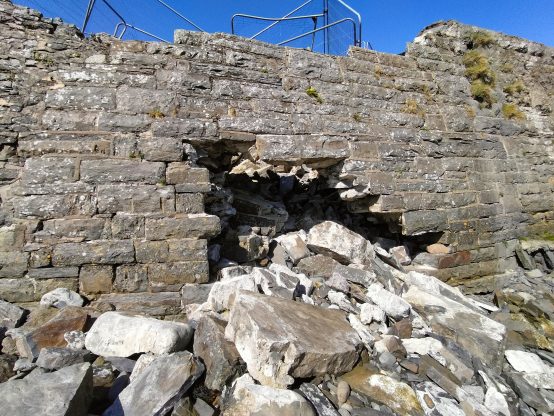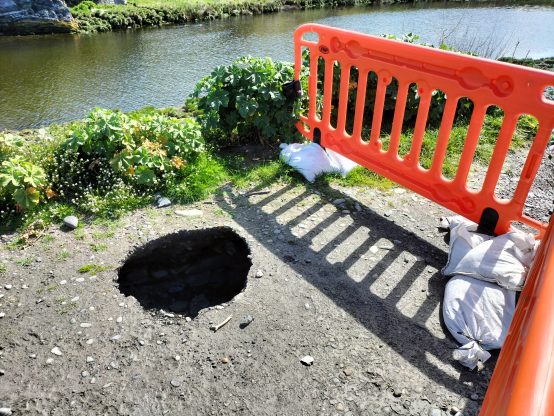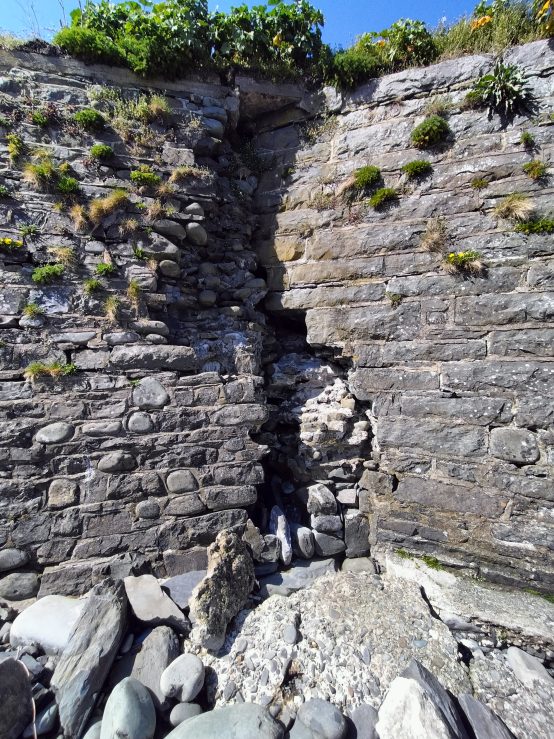by The Curious Scribbler
This winter has seen the passing of two remarkable women whose long lives were integral to the the life of Glandyfi and Eglwysfach. Both created wonderful gardens and also wielded influence far beyond their chosen patch.
Penny Condry, who died aged 102, was the widow of the writer and conservationist Bill Condry, whose Country Diary appeared in the Guardian for more that 40 years until his death in 1998. It had been the Manchester Guardian when he started writing for them. In the 1950s he became warden of the RSPB Glandyfi nature reserve, newly created as such thanks to its former owner W.H. Mappin of the jewellery firm Mappin and Webb. The Condrys moved into the old stone house on the reserve called Ynys Edwin and remained there all their lives. Not actually an island but one of those rocky outcrops which rise above the low marshland of the Dyfi Estuary. Here Penny tended a magical private garden.
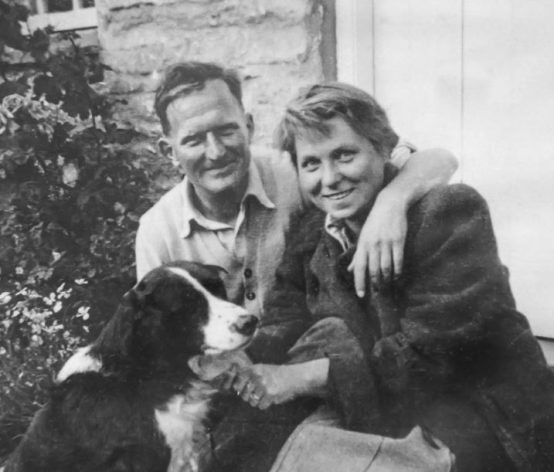
Bill and Penny Condry at Ynys Edwin in the 1950s. Her favourite photo, reproduced by Jeremy Moore www.talesfromwildwales.co.uk
At the recent memorial in Tabernacle chapel, Machynlleth, many of her friends and relatives ( great nephews and nieces for the most part) reminisced on the welcome which awaited behind the blue front door, the bookish interior, the tea and cake, and solitary beauty of the garden, half a mile down a muddy track, silent but for the birdsong and the rattle of the passing trains. Long tailed tit nested there, and many of the shrubs and flowers were fragrant and often white. But Penny was not only a gardener but a formidable botanist and naturalist whose knowledge could be relied upon, and a person who took a very great interest in all the people she met. Not entirely rooted to her patch, she was a long-time member of the Cardiganshire Horticultural Society and an expert, second only to John Corfield at identifying plants in other people’s gardens which they visited.

Penny Condry( left) and Joy Neal ( right) at the 100th birthday celebrations of the Eglwysfach WI in 2022, which also corresponded with Penny’s hundredth year. (photo: Alison Swanson)
The other lady in the picture is Joy Neal, granddaughter of a distinguished north Cardiganshire family, the Pughs. Joy’s grandfather Lewis Pugh Evans Pugh built the handsome Victorian gothic mansion of Abermad near Llanilar to house his large family, and then briefly owned Glandyfi Castle before moving to build a new home on land he owned at Cwmerau, and retaining much of the Glandyfi estate. Joy grew up at Voelas above the road at Glandyfi and remembered a girlhood swimming her pony across the Dyfi at low tide, and droving the family’ cattle across the mountains. Her cut-glass accent was ensured by her parents’ policy of only ever hiring English nannies. She was married young, to Stewart Neal scion of Daniel Neal’s, the London children’s outfitter which was later taken over by John Lewis Partnership. After a busy life in England they retired to what had been her mother’s house, Llwyncelyn, and the garden which she created became the highlight of the National Garden Scheme Open Days in West Wales. It also starred on Gardener’s World. Driving north through Glandyfi in summer one passes the entrance drive with a neat garage just inside the gate, and a long wall holding back an overflow of huge Gunnera leaves. Up the winding drive through woodland one reached the house set in an immaculate garden blending seamlessly into the mossy oak scrub and bluebell wood of the adjoining hillside. Joy became an expert collector of plants, especially acid-loving shrubs, rare ferns, trilliums, even a collection of eucalyptus. She was always learning.
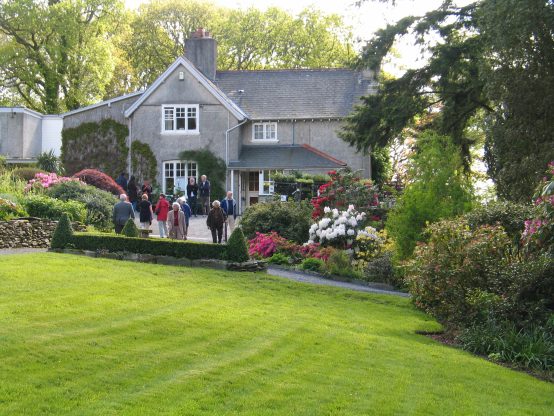
Last visitors leaving the NGS Open day at Llwyncelyn in May 2005
She was a gifted organizer. In the Cardiganshire Horticultural Society in the 1990s she pioneered and led an annual summer excursion visiting gardens of note. In the old-fashioned amateur tradition which has since been extinguished by regulation, Joy would organize CHS coach visits as far afield as France, Belgium, Italy and Madeira as well as to Scotland, Ireland and many parts of England. She would research and select the gardens we visited. Thanks to her Pugh grandfather’s ten offspring she seemed to have a well-heeled cousin wherever we went. One trip saw her lead her motley society for a slap-up free lunch in the chateau of yet another cousin and a leisurely stroll around their estate.
Eglwsfach has Joy Neal to thank for organizing the restoration of the Iron Room, a listed corrugated church hall and for creating the RS Thomas Festival which has run there every second year since 2008. Need an archbishop to address the company ( and also call the raffle)? Joy’s charm and confidence would achieve it effortlessly. In her eighties she became Vice Chairman of the Welsh Historic Gardens Trust and an indefatigable fundraiser for its charitable objectives.
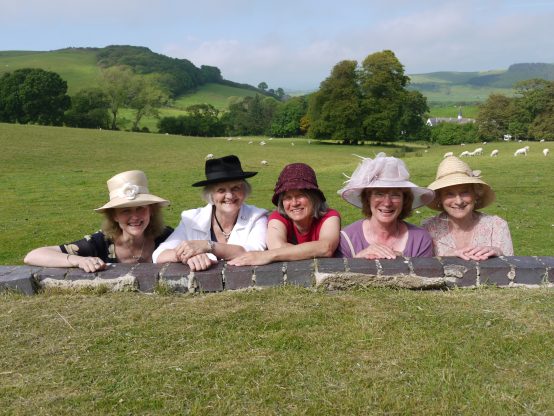
Joy Neal, ( right) at a fundraiser for WHGT, modelling hats at the Conrah Country Hotel
Only in the last few years did poor health slow her down and she died aged 95 just after Christmas. Her memorial will be held at St Michael’s Eglwsfach next Saturday. Neither Penny Condry nor Joy Neal had been to university or held any higher qualifications, but they were two of the most capable and knowledgeable people one could hope to meet.

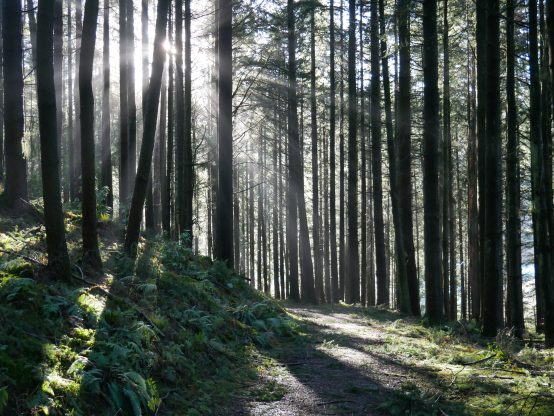
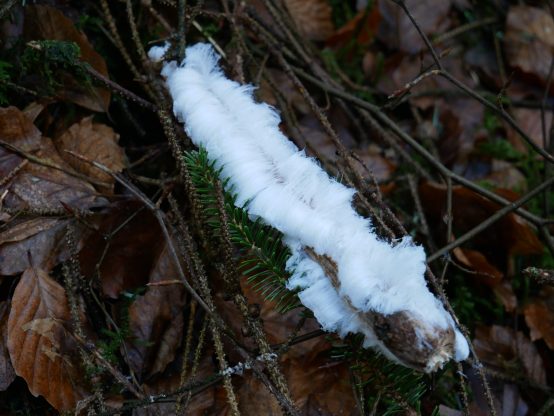
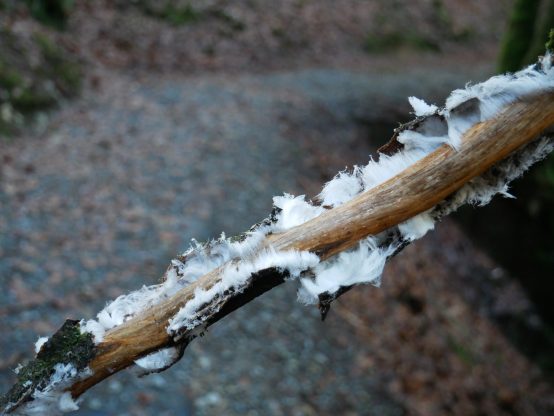
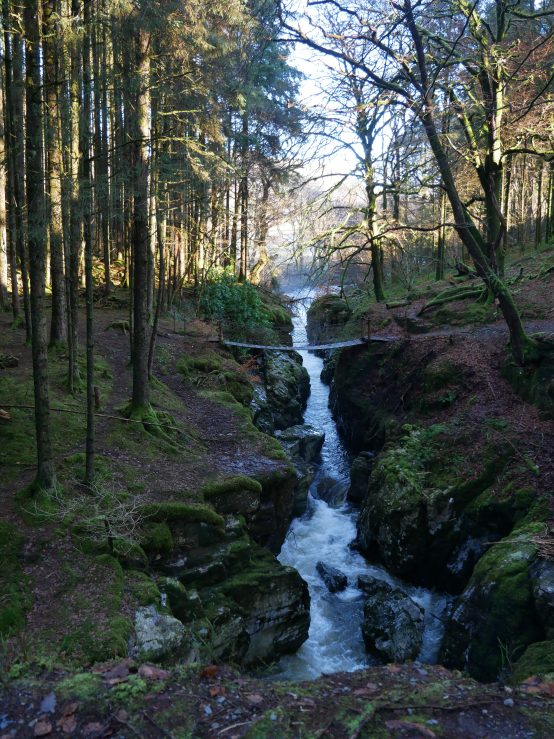
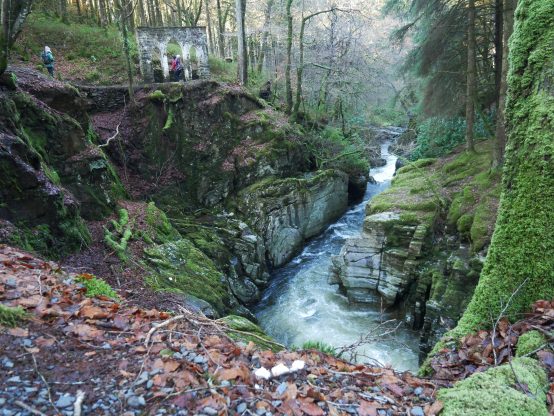
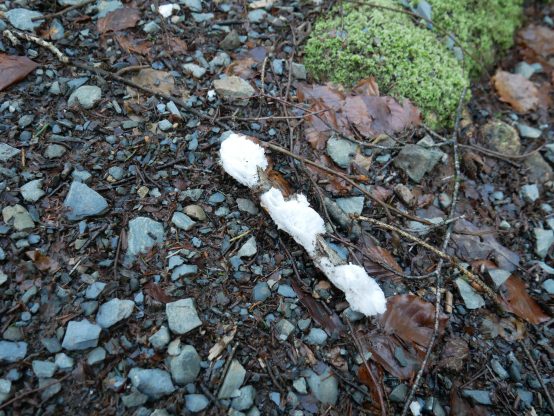
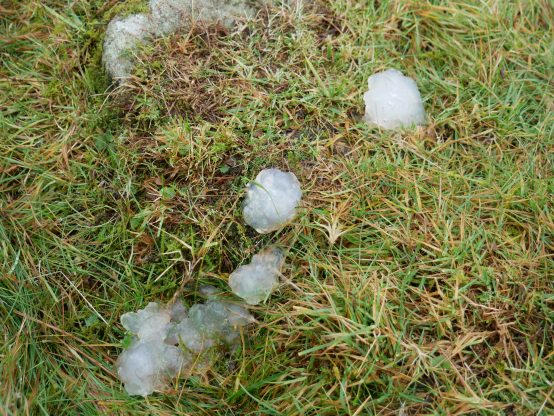
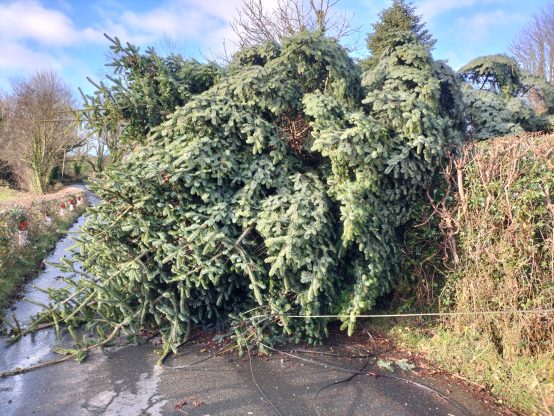
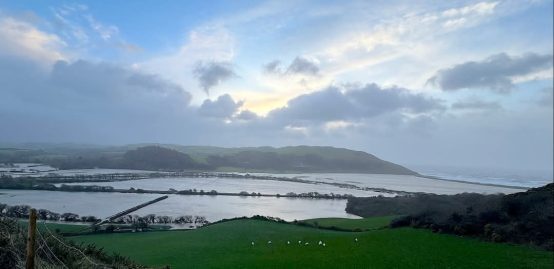
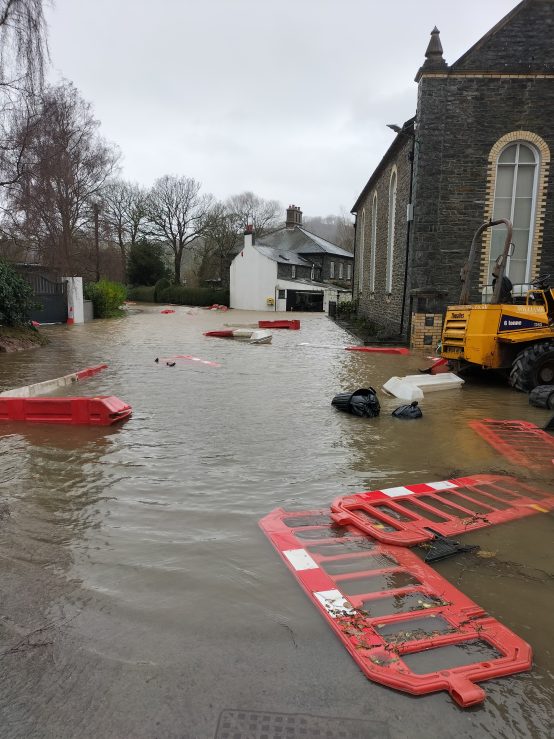
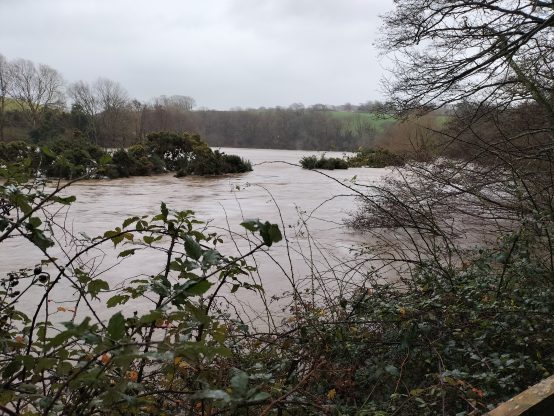
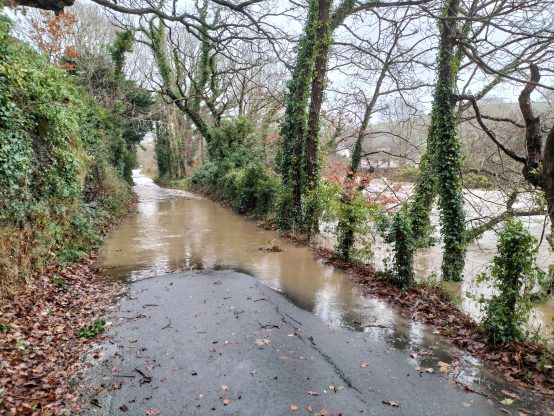
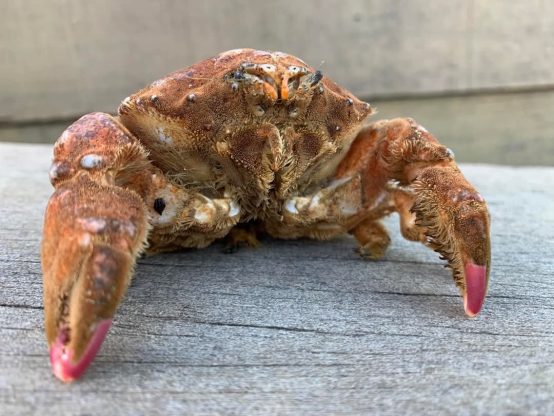
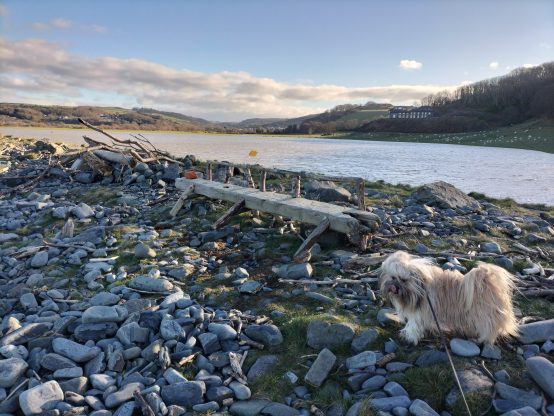
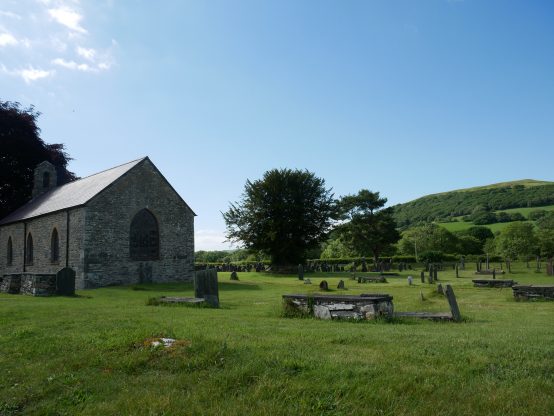
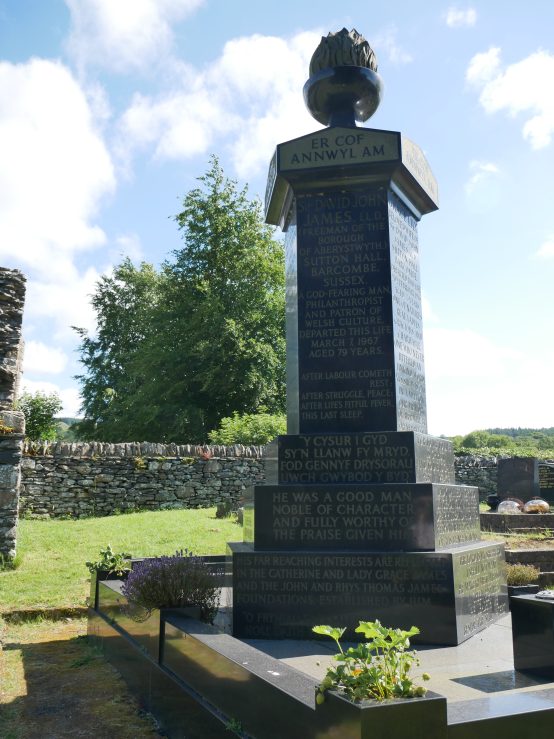
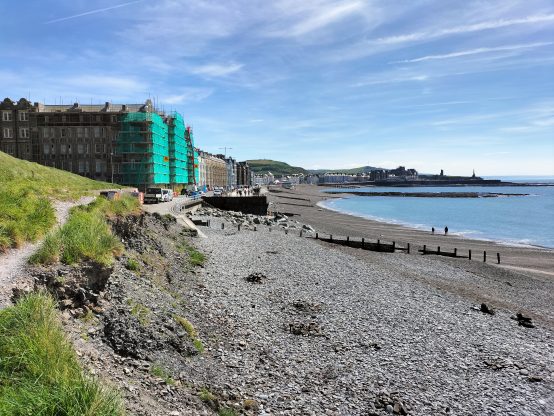
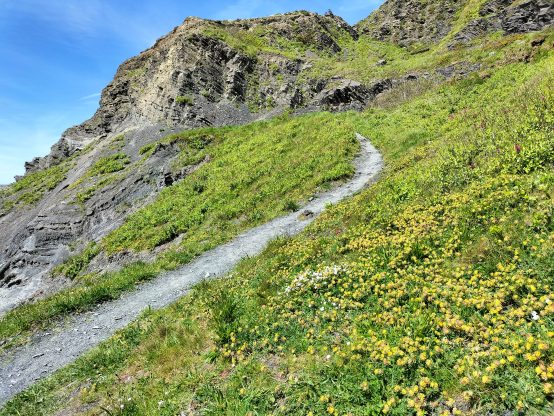
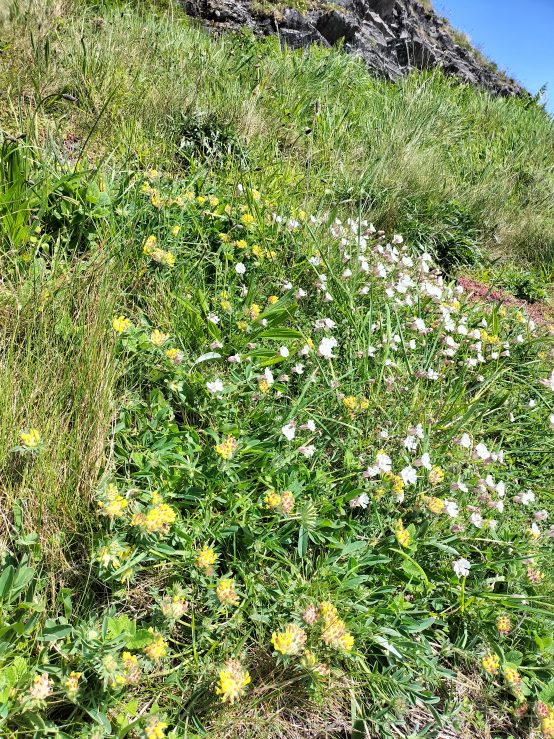
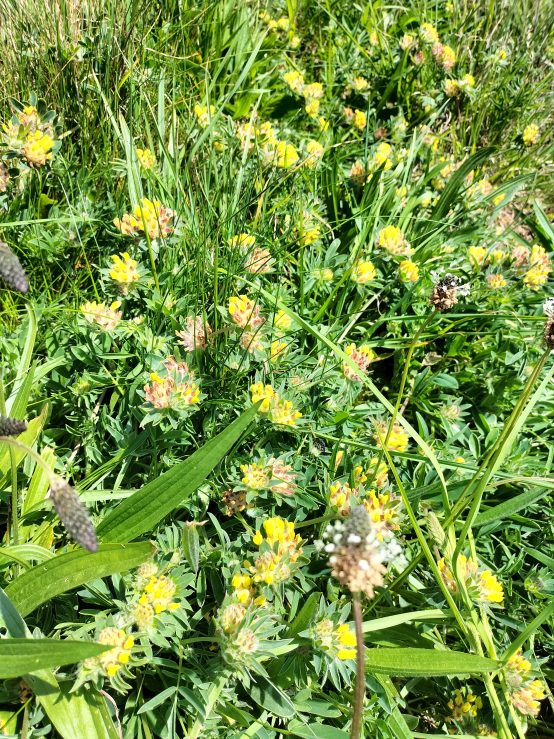
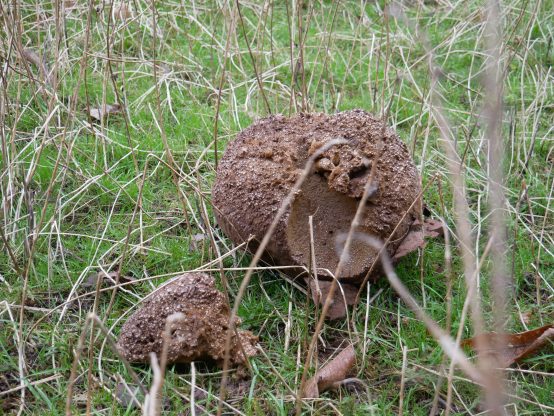
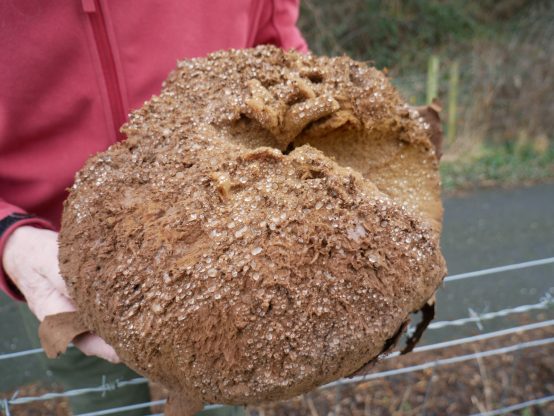
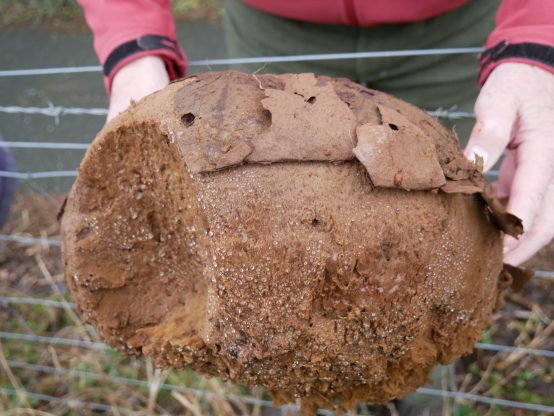
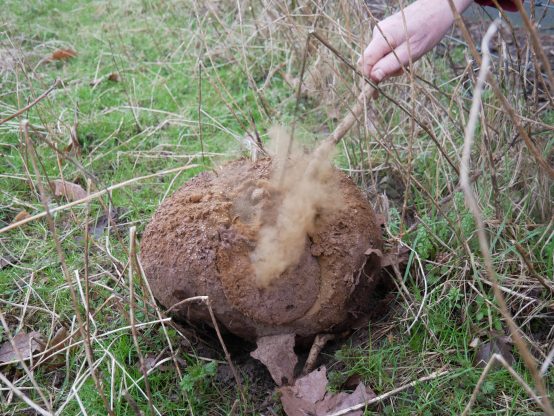
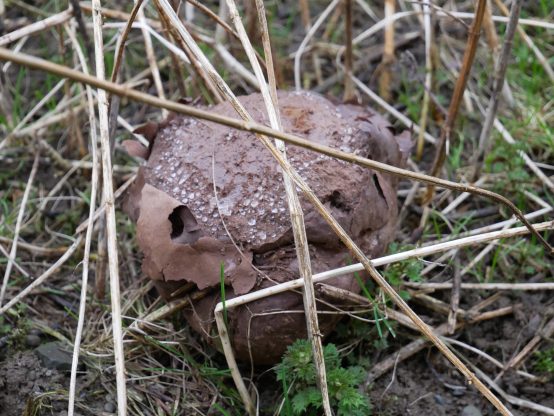
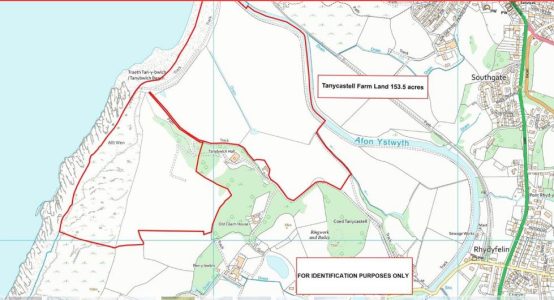
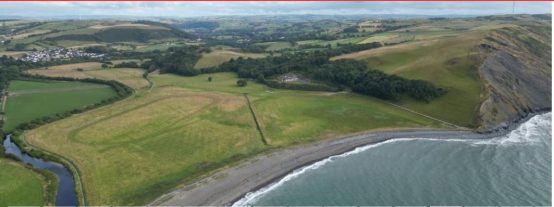
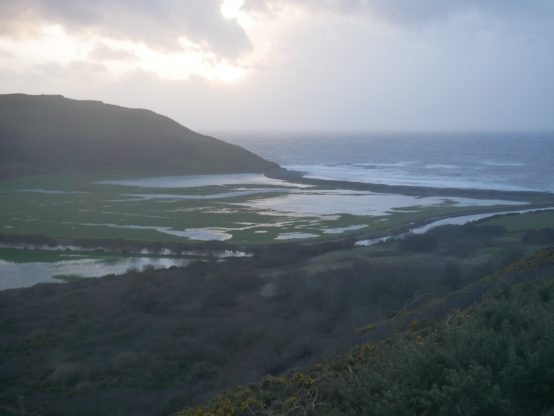
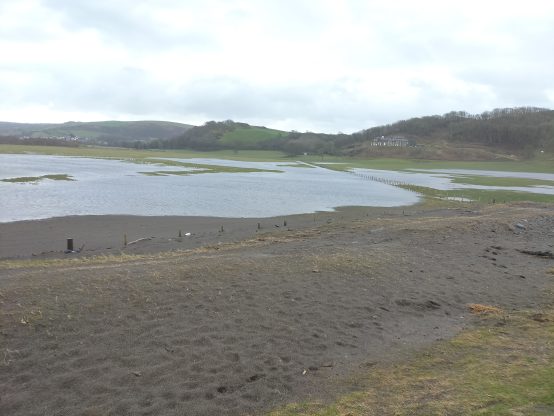
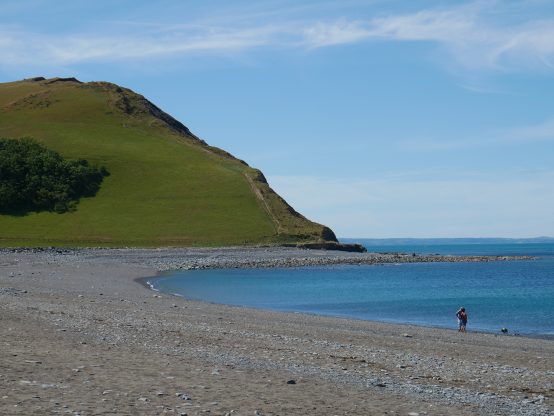
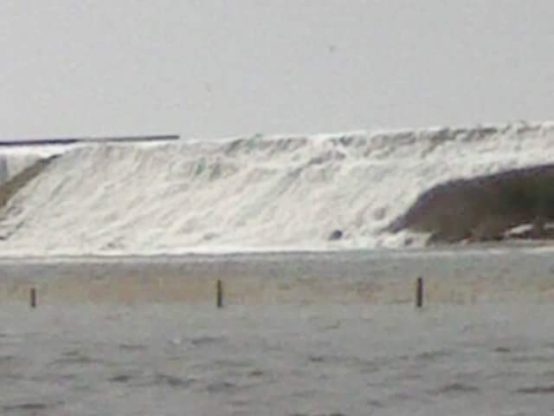
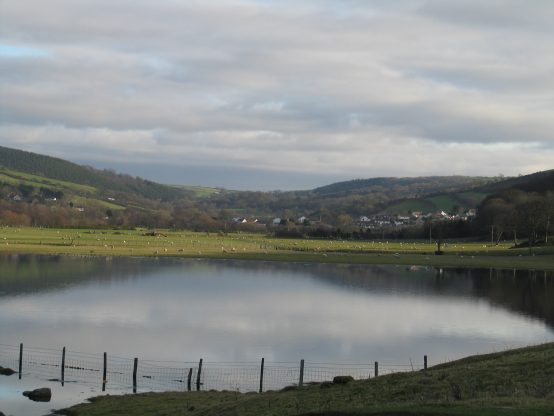
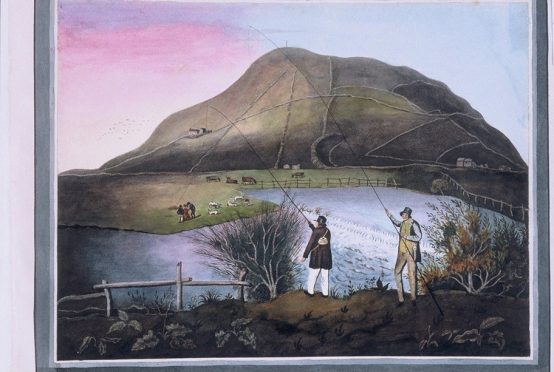
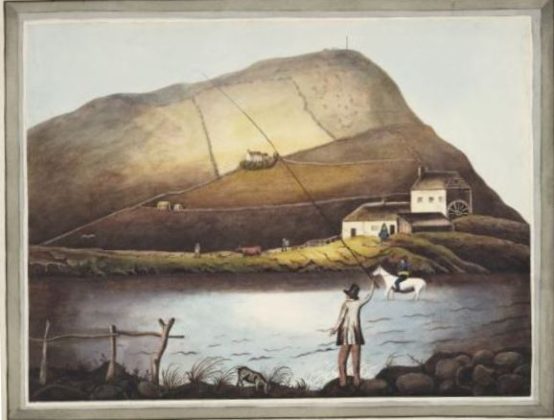
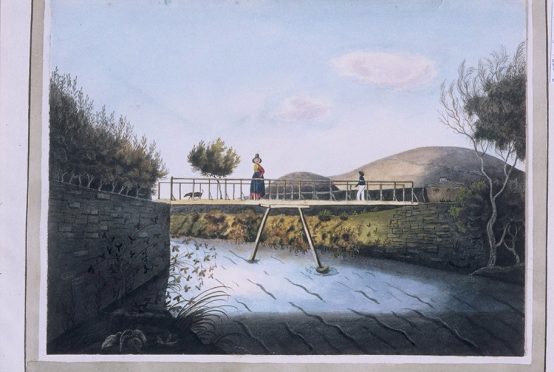
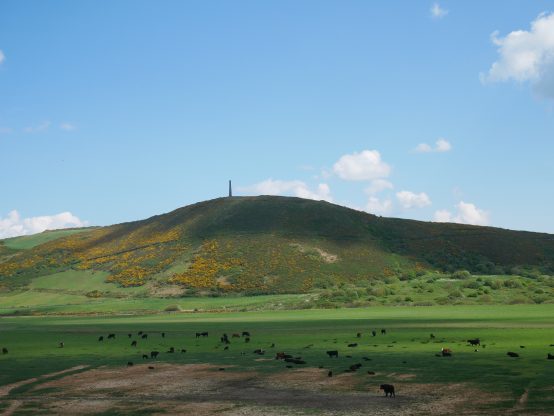
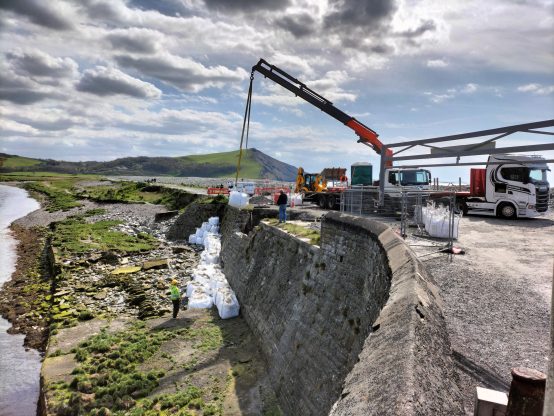 e Bags of stone are being piled up against the retaining wall, swung in on the crane arm of an Afan lorry, and while I watched a yellow digger was engaged in filling up the small sinkhole and tamping it down.
e Bags of stone are being piled up against the retaining wall, swung in on the crane arm of an Afan lorry, and while I watched a yellow digger was engaged in filling up the small sinkhole and tamping it down.